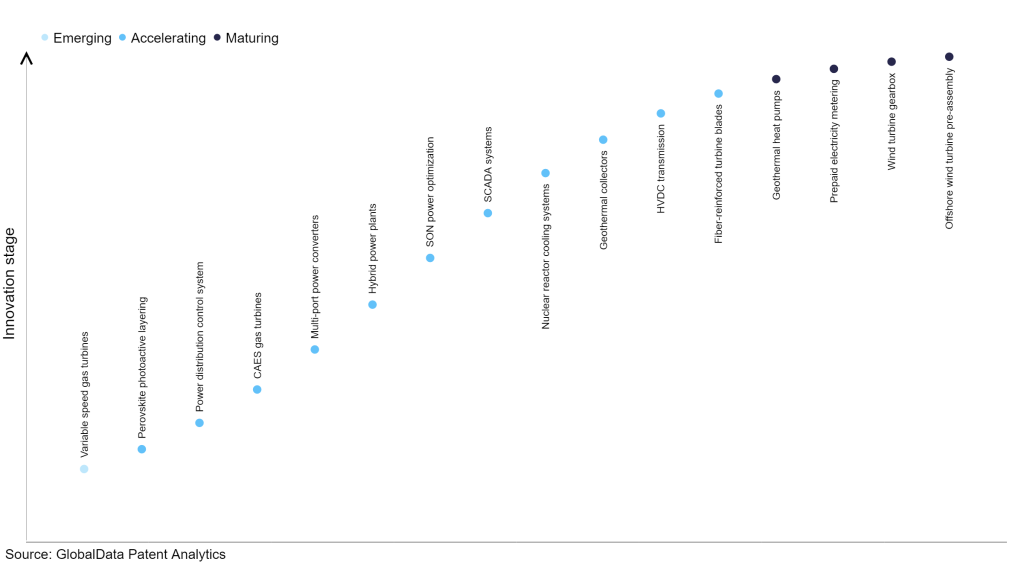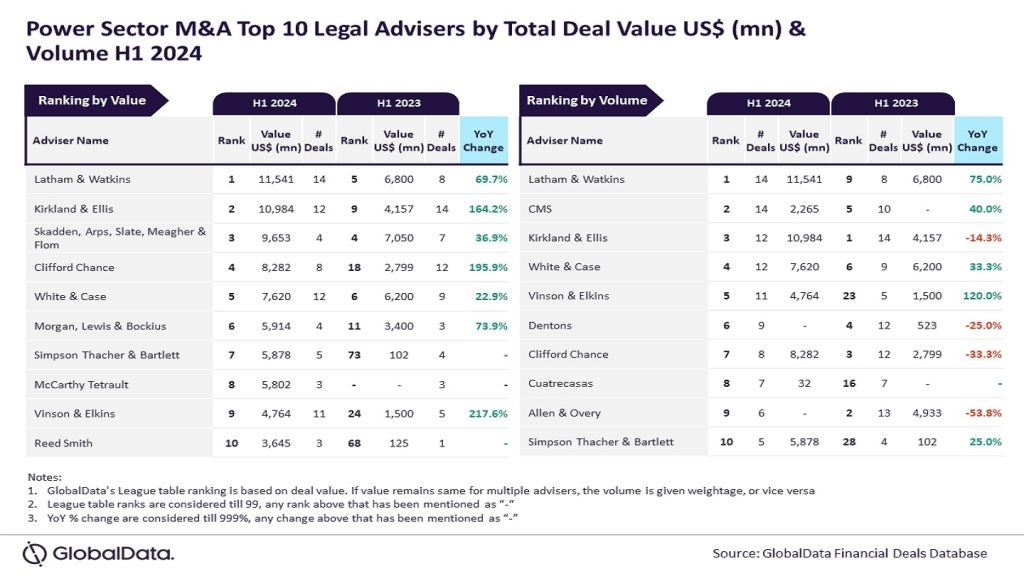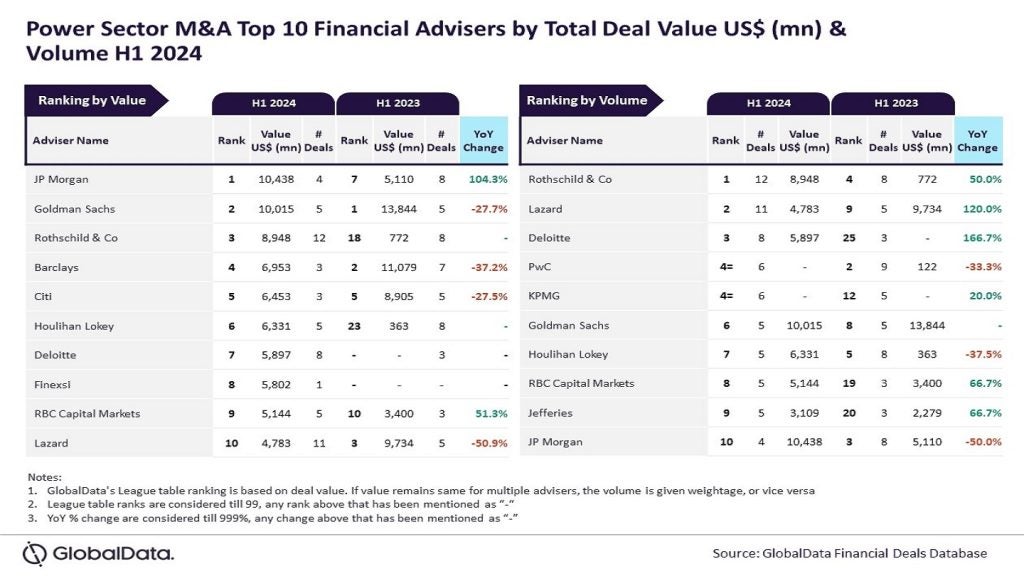The power industry continues to be a hotbed of patent innovation. Activity is driven by increased demand for solar energy and energy storage and the need for advancements to improve solar cell efficiency, and growing importance of technologies such as regular n-i-p structures and inverted p-i-n structures. In the last three years alone, there have been over 656,000 patents filed and granted in the power industry, according to GlobalData’s report on Innovation in power: perovskite photoactive layering. Buy the report here.
However, not all innovations are equal and nor do they follow a constant upward trend. Instead, their evolution takes the form of an S-shaped curve that reflects their typical lifecycle from early emergence to accelerating adoption, before finally stabilizing and reaching maturity.
Identifying where a particular innovation is on this journey, especially those that are in the emerging and accelerating stages, is essential for understanding their current level of adoption and the likely future trajectory and impact they will have.
40+ innovations will shape the power industry
According to GlobalData’s Technology Foresights, which plots the S-curve for the power industry using innovation intensity models built on over 70,000 patents, there are 40+ innovation areas that will shape the future of the industry.
Within the emerging innovation stage, variable speed gas turbines is a disruptive technology that is in the early stages of application and should be tracked closely. Perovskite photoactive layering, power distribution control system, and CAES gas turbines are some of the accelerating innovation areas, where adoption has been steadily increasing. Among maturing innovation areas are geothermal heat pumps and prepaid electricity metering, which are now well established in the industry.
Innovation S-curve for the power industry

Perovskite photoactive layering is a key innovation area in power
Perovskite photoactive layering is used in some of the recent solar cells. It includes a perovskite-structured compound, most commonly a hybrid organic-inorganic lead or tin halide-based material, as the light-harvesting active layer.
GlobalData’s analysis also uncovers the companies at the forefront of each innovation area and assesses the potential reach and impact of their patenting activity across different applications and geographies. According to GlobalData, there are 70+ companies, spanning technology vendors, established power companies, and up-and-coming start-ups engaged in the development and application of perovskite photoactive layering.
Key players in perovskite photoactive layering – a disruptive innovation in the power industry
‘Application diversity’ measures the number of applications identified for each patent. It broadly splits companies into either ‘niche’ or ‘diversified’ innovators.
‘Geographic reach’ refers to the number of countries each patent is registered in. It reflects the breadth of geographic application intended, ranging from ‘global’ to ‘local’.
Patent volumes related to perovskite photoactive layering
Source: GlobalData Patent Analytics
LG is one of the leading patent filers in perovskite photoactive layering. LG is an industrial conglomerate that offers television and home entertainment products, kitchen and laundry products, computers, air conditioners, and solar panels. The company manages equity investment portfolios on a corporate level and allocates resources to subsidiaries. Some other key patent filers are Sekisui Chemical, Samsung Group, Fujifilm, and Oxford Photovoltaics.
In terms of application diversity, Adeka leads the pack, while Hon Hai Precision Industry and Heraeus stood in the second and third positions, respectively. By means of geographic reach, Avantama held the top position, followed by Solvay and OTI Lumionics.
To further understand the key themes and technologies disrupting the power industry, access GlobalData’s latest thematic research report on Power.
Data Insights
From

The gold standard of business intelligence.
Blending expert knowledge with cutting-edge technology, GlobalData’s unrivalled proprietary data will enable you to decode what’s happening in your market. You can make better informed decisions and gain a future-proof advantage over your competitors.







